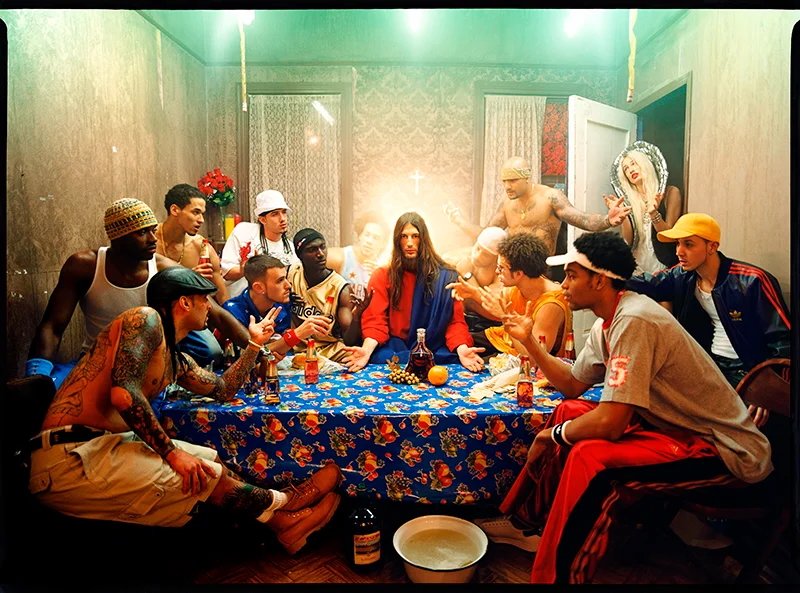Then came the day of Unleavened Bread, on which the Passover lamb had to be sacrificed. …
He said to them, ‘I have eagerly desired to eat this Passover with you before I suffer; for I tell you, I will not eat it until it is fulfilled in the kingdom of God.’ …
Then he took a loaf of bread, and when he had given thanks, he broke it and gave it to them, saying, ‘This is my body, which is given for you. Do this in remembrance of me.’ And he did the same with the cup after supper, saying, ‘This cup that is poured out for you is the new covenant in my blood.
Hubert van Eyck (Belgium 1385 – 1426) and Jan van Eyck (Belgium 1390 - 1441), Adoration of the Mystic Lamb, 1426–32, oil on panel. Detail of the Lamb on the lower central interior panel of the Ghent Altarpiece, St. Bavo Cathedral, Ghent, Belgium.
A dispute also arose among them as to which one of them was to be regarded as the greatest.
David LaChapelle (America, b. 1963), Jesus is My Homeboy: Last Supper, 2003, photograph.
Jesus, knowing that the Father had given all things into his hands, and that he had come from God and was going to God, got up from the table, took off his outer robe, and tied a towel around himself. Then he poured water into a basin and began to wash the disciples’ feet and to wipe them with the towel that was tied around him. He came to Simon Peter, who said to him, ‘Lord, are you going to wash my feet?’ Jesus answered, ‘You do not know now what I am doing, but later you will understand.’ Peter said to him, ‘You will never wash my feet.’ Jesus answered, ‘Unless I wash you, you have no share with me.’
Luke Allsbrook (America, b. 1972), Jesus Washes the Disciples, 2017, oil on canvas.
Bible Passage: Luke 22:7-34 & John 13-14
My Big Story Bible: Pages 204 - 206










